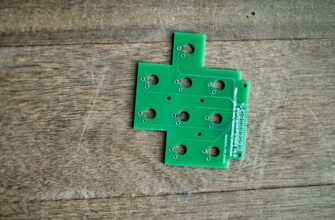- Introduction: Two Paths to Financial Innovation
- What is Bitcoin?
- What is M-Pesa?
- Key Differences Between Bitcoin and M-Pesa
- Surprising Similarities
- When to Use Bitcoin vs M-Pesa
- The Future: Convergence or Competition?
- FAQ Section
- Can I convert Bitcoin to M-Pesa directly?
- Which is more secure?
- Do Bitcoin and M-Pesa serve the same users?
- Could M-Pesa adopt blockchain technology?
Introduction: Two Paths to Financial Innovation
In today’s digital economy, both Bitcoin and M-Pesa stand as revolutionary payment systems transforming how we handle money. While Bitcoin emerged as a decentralized cryptocurrency challenging traditional banking, M-Pesa pioneered mobile money transfers in emerging markets. This article explores their unique architectures, use cases, and surprising synergies in the global financial landscape.
What is Bitcoin?
Bitcoin is a decentralized digital currency operating on blockchain technology. Created in 2009 by the pseudonymous Satoshi Nakamoto, it enables peer-to-peer transactions without intermediaries like banks. Key characteristics include:
- Limited supply capped at 21 million coins
- Transactions verified by miners through proof-of-work
- Pseudonymous but transparent ledger
- Global accessibility with internet connection
What is M-Pesa?
Launched in Kenya in 2007 by Vodafone and Safaricom, M-Pesa (Mobile Pesa) is a mobile phone-based money transfer service. It allows users to:
- Deposit/withdraw cash at agent locations
- Send money via SMS
- Pay bills and buy airtime
- Access microloans and savings products
Unlike Bitcoin, M-Pesa operates through telecom infrastructure and partnered financial institutions.
Key Differences Between Bitcoin and M-Pesa
- Technology: Bitcoin uses blockchain; M-Pesa relies on centralized servers
- Control: Bitcoin is decentralized; M-Pesa is owned by corporations
- Currency Type: Bitcoin is a cryptocurrency; M-Pesa transfers national currencies
- Access: M-Pesa requires basic mobile phones; Bitcoin needs smartphones/internet
- Regulation: M-Pesa complies with strict financial regulations; Bitcoin operates in evolving regulatory frameworks
Surprising Similarities
Despite fundamental differences, both systems share core innovations:
- Enabled financial inclusion for unbanked populations
- Reduced transaction costs versus traditional banking
- Introduced new models for cross-border payments
- Inspired countless fintech innovations worldwide
- Demonstrated mobile technology’s power in finance
When to Use Bitcoin vs M-Pesa
Choose Bitcoin for:
- International remittances with lower fees
- Censorship-resistant transactions
- Long-term value storage (as digital gold)
- Purchasing in crypto-friendly marketplaces
Choose M-Pesa for:
- Day-to-day transactions in supported countries
- Cash-based economies with limited banking infrastructure
- Instant settlements in local currency
- Government-to-person (G2P) payments and aid distribution
The Future: Convergence or Competition?
Emerging trends suggest potential integration rather than outright competition. Projects like BitPesa (now AZA Finance) bridge both worlds by converting Bitcoin to M-Pesa liquidity. Central Bank Digital Currencies (CBDCs) may incorporate elements from both systems. As blockchain technology matures and mobile penetration grows, hybrid models could dominate emerging economies.
FAQ Section
Can I convert Bitcoin to M-Pesa directly?
Yes, through third-party services like Paxful or LocalBitcoins that match buyers/sellers. Transactions involve selling Bitcoin for local currency deposited to M-Pesa.
Which is more secure?
M-Pesa has robust fraud controls and regulatory oversight. Bitcoin offers cryptographic security but requires user responsibility for private key management. Both have distinct security profiles suited to different threat models.
Do Bitcoin and M-Pesa serve the same users?
Partially. M-Pesa dominates in East Africa among low-income populations, while Bitcoin appeals to tech-savvy users globally. Significant overlap exists in remittance corridors like Kenya-Nigeria.
Could M-Pesa adopt blockchain technology?
Safaricom has experimented with blockchain for supply chain tracking. While full cryptocurrency integration seems unlikely due to regulatory constraints, private blockchain elements could enhance M-Pesa’s backend operations.








